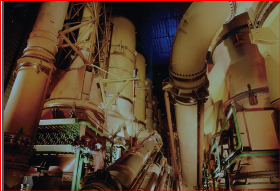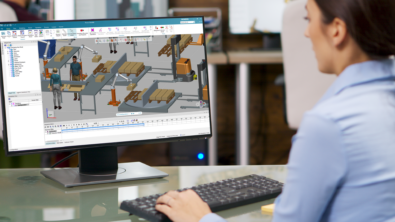Plant Simulation software helps AREVA prepare nuclear site for new projects

Case Study Summary:Plant Simulation software helps AREVA prepare nuclear site for new projects
EURODIF Production, a subsidiary of AREVA, an international leader in nuclear and renewable energy, operates the Georges Besse plant located on the AREVA Tricastin nuclear site. The operation has supplied enriched uranium to the nuclear reactors of more than 100 nuclear power plants in France and worldwide. The plant ceased commercial production in June 2012.
AREVA built a new plant, Georges Bess II, to replace the gaseous diffusion technology used by EURODIF with the gas centrifugation enrichment process which has advantages such as energy savings, reduced environmental footprint and competitiveness. The plant should reach full capacity in 2016.
EURODIF is in the process of permanently shutting down the old plant. In the current step of the process, they are preparing operations for dismantling and decommissioning installations. It is a massive undertaking that will require five phases: disassembly of large equipment, deconstruction of the diffusers, grinding of the barriers, cutting of metal parts, and conditioning of waste for storage.
In 2013 EURODIF began studies to consolidate and size the dismantling workflows. The project aims to effectively maintain the schedules and control all costs, from the construction of resources required for the dismantling to the project’s completion, including the dismantling of facilities and the clean-up of the civil engineering.
The project team selected the Plant Simulation discrete event solution in the Tecnomatix portfolio to conduct the studies, due to its ability to create digital models of logistical systems and treatment processes to explore their characteristics and optimize their performance. They also sought the support of INOPROD, a Siemens PLMM Software partner specializing in modeling and simulating production workflows.
With the help of INOPROD, the digital models created with Plant Simulation software help assess scenarios right from the design phase, well before the installation of actual production systems. The modeling studies began with the facilities that needed to be built for the future processing of the waste. Comprising three levels, a model serves to precisely evaluate a number of scenarios, and to produce indicators in terms of capacity and time. The dynamic models integrate decision making concepts such as the choice of path and productivity losses due to maintenance, failures, and other events. Plant Simulation’s analysis tools enable the team to readily evaluate alternative scenarios that provide the information needed to quickly make sound, reliable decisions right from the initial phases.
Keeping the budget under control
Using Plant Simulation helped the team to check the right sizing of the proposed facilities to effectively demonstrate controlled costs. Additional studies were conducted to optimize costs, and adjust resources and production rates.
Reducing lead times
Using Plant Simulation helped to confirm the feasibility of a reduction in lead times of between 20 and 30 percent in relation to the schedule defined for the nominal dismantling phase.
Advantages of using Plant Simulation
The dismantling project leader said that during the preliminary design phase they perform simulations with Plant Simulation to determine the best cost/lead time/risk scenario. Thereafter, once the actual design has been determined, workflow models will be used to optimize the organization of work by factoring in flow variations resulting from dismantling operations and the load factor of the waste processing units. In particular, these models provide a response to current concerns in relation to the most suitable pace of work for the teams. Lastly, during the operation phase, the tool can help with decisions to reconfigure, when necessary, the organization of the work, and the scheduling of the projects in line with any unknown factors or planning requirements. Our guiding principle is to ensure the safety and security of operations while optimizing costs.
Read the complete case study: AREVA
 AREVA Plant
AREVA Plant


